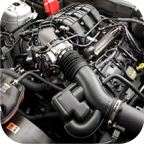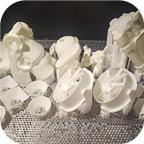Inside Ultrasonic Cleaning: The Science of Deep Clean Without the Scrub
Browse Volume:74 Classify:Support
Let’s be honest—scrubbing grime from tiny crevices is nobody’s idea of fun. Whether it’s intricate jewelry, delicate surgical tools, or automotive fuel injectors, certain objects resist even the most determined cleaning efforts. That’s where ultrasonic cleaning steps in like the quiet superhero of the cleaning world. But if you’ve ever paused and asked, “How does an ultrasonic cleaner work?”, you’re not alone.
It sounds a little futuristic, doesn’t it? The idea that sound waves—something we can’t even see—could somehow obliterate dirt without a single bristle or chemical burn. But there’s some serious science behind that shimmering tank, and it all starts with a phenomenon called cavitation.
The Basics: What Is an Ultrasonic Cleaner?
At first glance, it’s just a tank—stainless steel, filled with water or a water-based cleaning solution. But look closer, and you’ll see tiny discs or panels attached to the underside. These are transducers, and they’re the heart of the operation. When powered on, they vibrate at incredibly high frequencies—typically 20,000 to 40,000 cycles per second, or 20–40 kHz.
This vibration creates pressure waves in the liquid. But these aren’t gentle ripples—they’re shockwaves on a micro scale. They form microscopic bubbles that rapidly expand and collapse in a process called cavitation. And here’s where the magic happens.
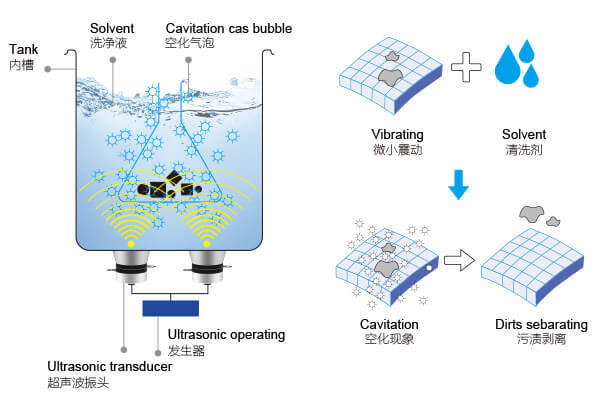
The Principle Behind Ultrasonic Cleaning
Cavitation: The Invisible Muscle
Think of cavitation like this: Imagine being surrounded by a sea of microscopic air pockets. Suddenly, those bubbles implode with force—not enough to damage most materials, but more than enough to dislodge the tiniest particles of dirt, oil, or rust.
Each implosion produces heat and shockwaves, like miniature explosions happening thousands of times per second right next to the object’s surface. That’s why ultrasonic cleaning is so effective—it doesn’t just clean the surface. It reaches into microcracks, hidden grooves, and shadowy corners that sponges and brushes can’t reach.
What’s fascinating is that this isn’t brute-force cleaning. It’s finesse. The bubbles scrub at a molecular level, yet the process is gentle enough to clean something as fragile as an antique watch mechanism or dental tool.
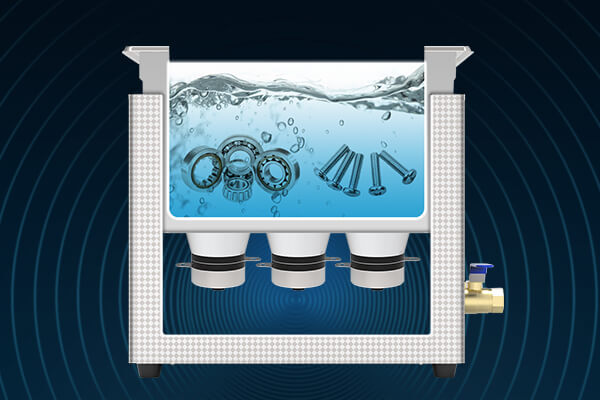
Ultrasonic cleaning
Frequency, Power, and the Role of Temperature
Let’s step into the control room, metaphorically speaking. Not all ultrasonic cleaners are created equal, and much of their effectiveness depends on three main factors: frequency, power, and temperature.
- Frequency affects the size and energy of the cavitation bubbles. Lower frequencies (20–25 kHz) produce bigger, more aggressive bubbles, perfect for heavy-duty grime on metal parts. Higher frequencies (35–45 kHz and up) generate smaller, gentler bubbles, ideal for delicate items like jewelry, optical lenses, or printed circuit boards.
- Power controls how intense the vibrations are. Too low, and you won’t get effective cleaning. Too high, and you risk damaging delicate items.
- Temperature amplifies the cleaning effect. Warmer liquids soften grease and contaminants. Most units work best between 40–60 °C. That’s why many advanced ultrasonic cleaners include built-in heaters.
Interestingly, the relationship between these three isn’t linear—it’s more like tuning an instrument. For example, cleaning surgical instruments requires a different frequency-power combo than restoring old coins or carburetor parts.
What Can (and Can’t) Be Cleaned?

Application areas of ultrasonic cleaning machines
From hospitals to hobbyist dens, ultrasonic cleaners are everywhere. And the list of what they can clean is nearly endless:
- Jewelry with complex mountings
- Dental and surgical tools
- Tattoo equipment and piercing gear
- Carburetors and engine parts
- Electronic components
- Firearm parts
- Optical lenses and glasses
- Coins, collectibles, and antique mechanisms
But not everything belongs in an ultrasonic cleaner. Soft gemstones like pearls, opals, and emeralds can be damaged. So can glued components, porous items like wood or leather, and certain plastics that can’t tolerate vibration or heat.
The Chemistry Behind the Clean
Though cavitation does most of the heavy lifting, the liquid in the tank plays a huge supporting role. You could technically use just water, but the right detergent makes a world of difference.
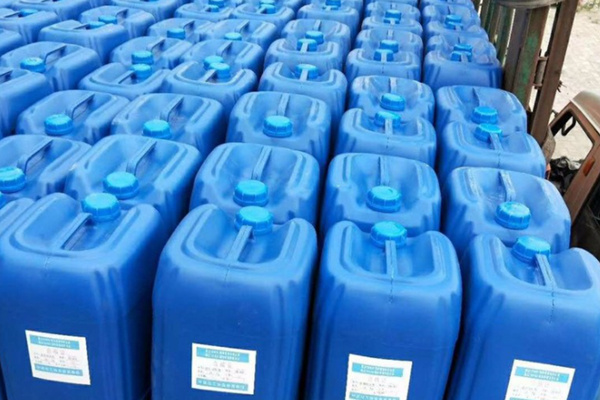
Cleaning agent
Cleaning solutions are tailored to the material and contaminant:
- Alkaline detergents cut grease and organic residue.
- Acidic solutions work better on oxides and corrosion.
- Neutral pH solutions are used for delicate items like electronics or medical tools.
- Enzyme cleaners help dissolve protein residues in medical and dental fields.
Some cleaners even include surfactants, dispersants, and chelating agents to target specific types of grime. It’s chemistry and physics working together in harmony.
A Real-World Example: From Lab Bench to Watchmaker’s Table
Let’s take a brief detour and peek inside two worlds that rely heavily on ultrasonic cleaning.
Medical laboratories use ultrasonic tanks to clean surgical instruments and pipettes. Here, cleanliness isn’t just about appearance—it’s about eliminating any trace of biofilm or cross-contamination. Ultrasonic tanks used in hospitals are often integrated with validation systems, automated cycles, and post-cleaning sterilization units.
Now contrast that with a watchmaker’s bench. Precision tools and tiny gears come out of vintage watches coated with oil, sweat, and debris that’s settled in for decades. A short cycle in an ultrasonic bath with a fine solution gently restores them to their original luster—without harming the movement or warping the materials.
These stories underscore the versatility of ultrasonic cleaners. From hard science to heritage craftsmanship, they adapt to context without changing the core technology.
Applications Across Industries: Why Everyone’s Using Ultrasonics
The adaptability of ultrasonic cleaning technology is truly its superpower. You’ll find it humming quietly in dentist offices and roaring to life in aerospace factories. Each industry adapts it in subtly different ways—but all benefit from its ability to clean deeply, safely, and efficiently.
Healthcare and Dentistry
Hospitals and dental clinics can’t take chances with sterilization. While ultrasonic cleaning doesn’t sterilize by itself, it provides a critical pre-sterilization stage. Instruments first go through an ultrasonic bath to remove visible and invisible debris, ensuring that subsequent autoclave cycles or chemical disinfectants are more effective. This two-stage approach is now recommended in infection prevention guidelines by organizations such as the Centers for Disease Control and Prevention (CDC) and World Health Organization (WHO).
Automotive and Mechanical Engineering
Carburetors, injectors, valves, and brake components accumulate carbon deposits, fuel varnish, and grime over time. Mechanics traditionally relied on manual scrubbing or soaking in harsh chemicals. Ultrasonic cleaners, however, deliver results with greater consistency and without the need for abrasive techniques. Their ability to penetrate tight spots—think needle valve seats or gear bearings—makes them a mechanic’s favorite.
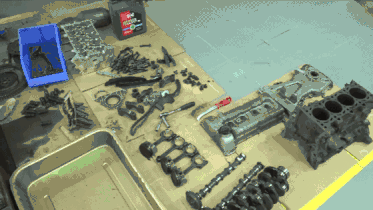
Aerospace and Defense
Precision is everything in aerospace. Jet engine parts, turbine blades, and small fasteners need to be absolutely contaminant-free before inspection, assembly, or coating. Ultrasonic cleaning here isn’t a convenience—it’s a requirement. Often, cleaning is paired with multi-stage automated lines, where parts move through several ultrasonic tanks with increasing levels of purity and final rinses done in deionized water.
Electronics and Optics
Printed circuit boards (PCBs), camera lenses, fiber optic connectors—all have one thing in common: vulnerability to residue and static damage. Ultrasonic cleaning, particularly at higher frequencies (60 kHz and up), enables safe, thorough cleansing without physical contact. Engineers typically follow up with alcohol rinses (outside the tank!) and use drying ovens or compressed air.
Jewelry and Art Restoration
Delicate heirlooms and artifacts often carry more than just dirt—they hold age, patina, and history. With the right frequency and cleaning solution, ultrasonic cleaning can bring back brilliance without erasing the piece’s story. Museums and restorers often use custom-built machines with adjustable parameters to preserve authenticity.
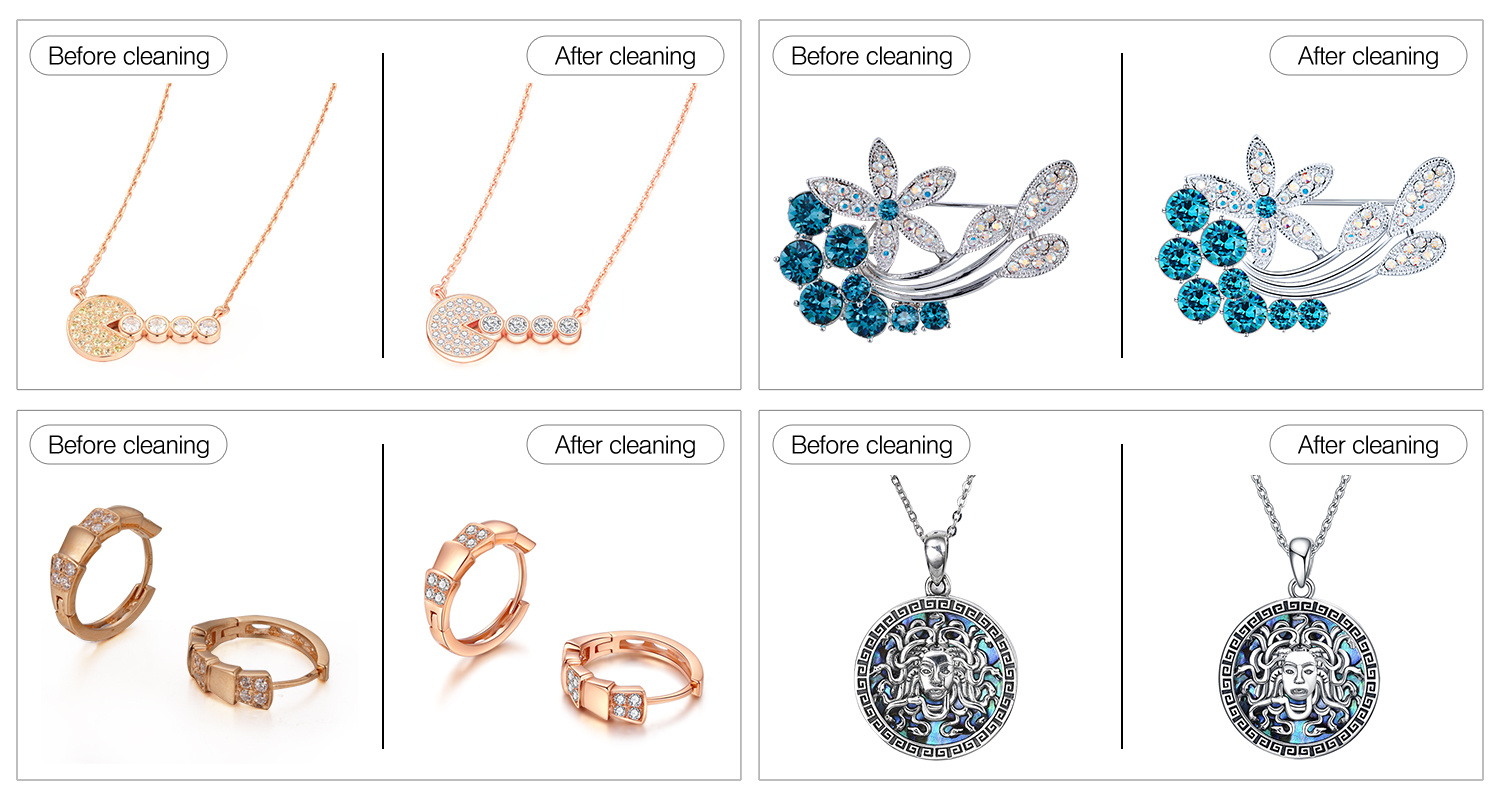
granbo ultrasonic Jewelry Cleaning effect
Maintenance and Safe Operation
Using an ultrasonic cleaner is not complicated—but it’s also not plug-and-play forever. To get consistent results, routine care is essential.
- Drain and replace the solution regularly: After every 5–10 cycles, especially if cleaning oily or biological materials.
- Degas the solution: New solutions trap air bubbles that reduce cavitation. Run the cleaner empty for a few minutes before inserting items.
- Use baskets: Never rest items directly on the tank floor—it reduces cavitation efficiency and can damage the transducers.
- Avoid overloading: Too many objects block ultrasonic waves. Always space items for best results.
- Keep it clean: Wipe down the tank after each use and inspect the transducers for residue buildup.
Advanced models even come with digital controls, automatic degassing, and self-cleaning diagnostics. But even a basic model benefits from thoughtful upkeep.
Debunking Myths Around DIY Ultrasonic Cleaners
As with any powerful technology, ultrasonic cleaning has generated its share of myths—especially in the age of YouTube tutorials and TikTok cleaning hacks.
“I can build one with a speaker and a tin can.”
Not quite. True ultrasonic cavitation requires high-frequency vibrations that standard speakers can’t produce. Most homebrew attempts just agitate water without delivering real cleaning power.
“You can use any liquid inside.”
Dangerous advice. Using flammable or corrosive liquids without proper knowledge can lead to fires, vapor damage, or worse. Stick to water-based solutions unless you have industrial equipment built for solvents.
“It cleans anything and everything.”
Ultrasonic cleaners work wonders on many things—but not all. Items like wood, certain soft plastics, glued components, and opals should be avoided. Always check material compatibility first.
Where Science Meets Art: The Evolution of Ultrasonic Technology
The first ultrasonic cleaning systems were developed in the 1950s, primarily for industrial applications. They were massive, expensive, and loud. Fast forward to today, and you can buy a compact, digitally controlled cleaner for under $100—sized just right for your watch, glasses, or dental retainer.
But the real innovations are happening behind the scenes. Modern systems are experimenting with:
- Variable frequency modes: Letting users toggle between deep clean and fine clean cycles.
- Pulse modulation: To increase bubble energy momentarily and dislodge stubborn grime.
- Sweep frequency technology: To reduce dead zones in the tank and ensure more uniform cleaning.
And then there’s automation. High-end setups in manufacturing lines now include robotic arms that load and unload items, data-logging software that tracks cleaning history, and IoT integration for predictive maintenance alerts.
As sustainability becomes a bigger focus, companies are also designing systems that reuse water, use biodegradable detergents, and reduce chemical runoff—meeting both cleaning and environmental goals.
The Silent Revolution in Cleaning
There’s something poetic about the way ultrasonic cleaning works—sound that we can’t hear, cleaning that we don’t see. It defies the scrubbing-and-scraping approach we grew up with and replaces it with invisible precision. Whether you’re restoring vintage coins, prepping surgical gear, or simply trying to keep your eyeglasses smudge-free, ultrasonic cleaners bring technology, chemistry, and physics into everyday cleaning.
It doesn’t get louder with power. It gets smarter. And once you’ve experienced the difference—once you pull something from the tank and see it shine like new—you may never want to clean the old-fashioned way again.
 Granbo Sonic
Granbo Sonic





